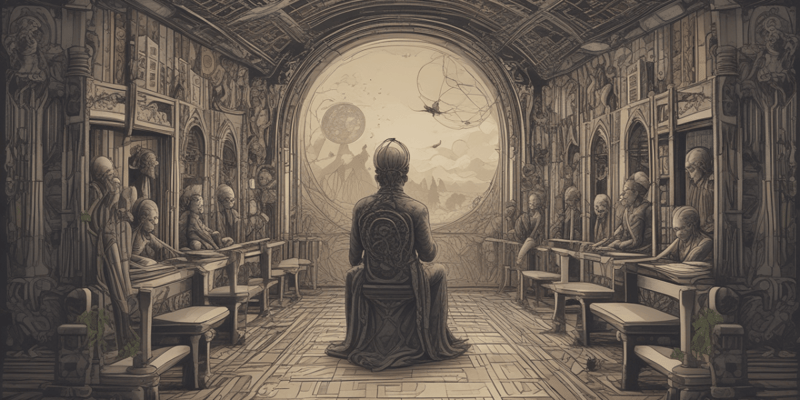Podcast
Questions and Answers
What is an eyewitness?
What is an eyewitness?
What factor does NOT influence eyewitness observations?
What factor does NOT influence eyewitness observations?
Why is eyewitness misidentification significant in the justice system?
Why is eyewitness misidentification significant in the justice system?
What role does a forensic sketch artist play in criminal investigations?
What role does a forensic sketch artist play in criminal investigations?
Signup and view all the answers
How do jurors typically view eyewitness testimony?
How do jurors typically view eyewitness testimony?
Signup and view all the answers
What commonly accepted viewpoint exists regarding eyewitness accounts?
What commonly accepted viewpoint exists regarding eyewitness accounts?
Signup and view all the answers
What is the Bunny Effect?
What is the Bunny Effect?
Signup and view all the answers
What can investigators gain from eyewitness accounts?
What can investigators gain from eyewitness accounts?
Signup and view all the answers
Study Notes
Eyewitness Accounts
- An eyewitness is a person who has seen something related to a crime and can communicate their observations.
- Eyewitness accounts vary considerably from person to person due to factors such as:
- Level of interest
- Prior knowledge
- Biases
- Eyewitness misidentification is the leading cause of wrongful convictions nationwide.
- The criminal justice system heavily relies on eyewitness identification and testimony to investigate and prosecute crimes.
- Most states acknowledge eyewitness accounts as “flawed” science.
- Investigators use eyewitness accounts to generate leads and gather substantial evidence for convicting suspects.
- Eyewitness testimony is presented in court when an eyewitness testifies about a crime.
- Jurors consider eyewitness testimony highly influential, often swaying them towards a conviction.
- Individuals perceive the same scene differently based on various factors.
- Memory is susceptible to influence, molding, and manipulation.
- The Bunny Effect video demonstrates the fallibility of memory.
- Investigators often employ forensic sketch artists to recreate images of perpetrators based on witness descriptions.
- Forensic sketch artists collaborate with police to interview victims or witnesses, aiming to produce a semi-realistic drawing reflecting the perpetrator's image.
Studying That Suits You
Use AI to generate personalized quizzes and flashcards to suit your learning preferences.
Related Documents
Description
This quiz explores the complexities of eyewitness accounts in the criminal justice system. It covers the factors that influence eyewitness testimony, the prevalence of misidentification, and the impact on wrongful convictions. Test your understanding of how eyewitness accounts are used and perceived in legal contexts.



